Phalaenopsis Kaode twinkle is a black hybrid orchid with a white lip. Despite its short existence in the "flower world", a heterosis hybrid has a large number of subspecies and varieties. To "beauty" pleased with long and high-quality flowering, it is worth properly caring and propagating plants.
Content
Description
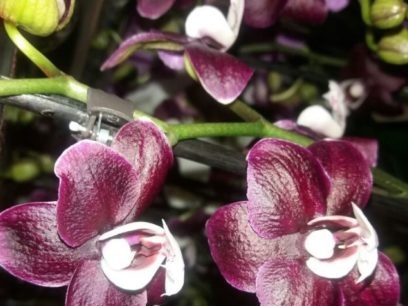
P kaode twinkie is an epiphytic plant. Looking at the flowering hybrid, you can see that its color is not black, as it seems at first glance. Coloring is achieved due to the saturation of the purple-burgundy color of the petals. The saturated purple hue of the hybrid and the white-yellow lip create a visual illusion. The effect is enhanced by a light perianth, which contrasts strongly on dark petals.
The plant has a light unobtrusive aroma, which is strongly manifested in the morning or evening. Hybridity of the hybrid increases with increased humidity around the stem. At the beginning of development, each subsequent leaf of phalaenopsis is larger than the previous. Foliage takes on the same size after the crop reaches two years.
Phalaenopsis Kaoda history of occurrence
The orchid culture owes its name to the student of the ancient Greek philosopher Plato. The scientist and naturalist Feofrast discovered an unusual plant in the mountains with two onion roots. As a result, he called the discovered culture Orchis, which means “small eggs” in ancient Greek.
Several legends are associated with the emergence of phalaenopsis. So, according to one legend, a flower originated from pieces of a rainbow scattered on the ground. Another story says that the phalaenopsis began to grow in the place where the ancient Greek goddess of love lost her sandals.
The plant was first mentioned 2000 years BC in China. The first orchid was discovered by a German naturalist on one of the Moluccas. The genus was named after two Greek words: phalaina and opsis, which literally translate as "a night butterfly that looks like a flower."
In the mid-eighteenth century, a naturalist pastor from Sweden found another orchid, sending it for study to natural scientist Karl Linnaeus. Two years later, the scientist described the plant in his scientific work as Epidendrum the Beautiful, which from ancient Greek translates as "inhabitant of the trees."
A century later, the Dutch botanist and mycologist Karl Ludwig Blume found another wild phalaenopsis in the Philippines. Looking at the forest through binoculars at night, he mistook the plant for white large scoops. In memory of his "mistake", he called the plant Phalaenopsis (butterfly-like). Thanks to the efforts of breeders, the orchid varieties found became the parents of the phalaenopsis hybrid Kaoda Twinkle.
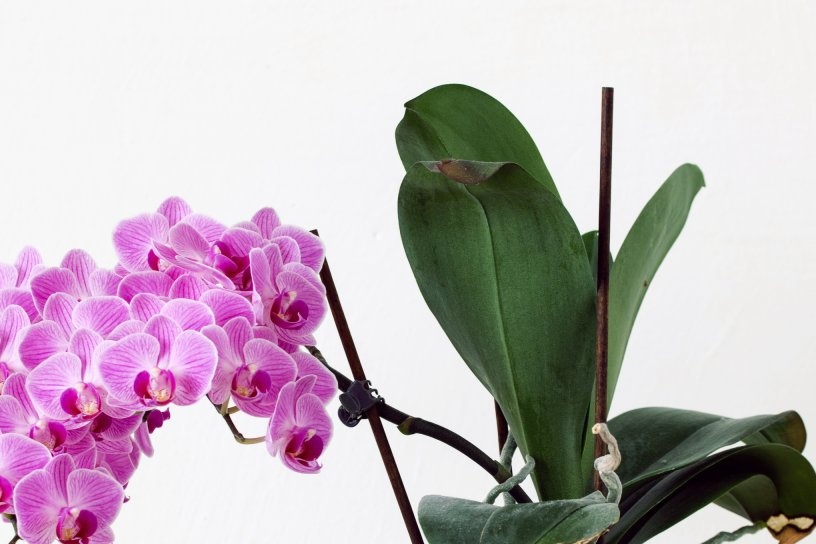 You may be interested in:
You may be interested in:External characteristics
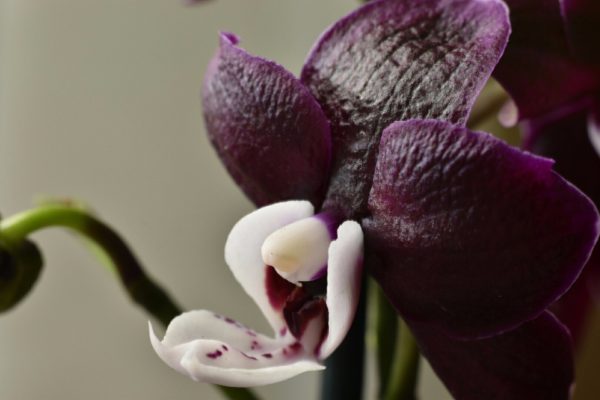
The modified apical leaves of the Kaoda Twinkle orchid hybrid, forming a corolla, are very dense dark cherry with a strong waxy coating. When sunlight falls on a flowering plant, the petals shine and shimmer. The height of the heterosis hybrid is average; the stem hidden by leaf blades reaches 25 cm -75 cm.
The color of the leaves, which grow up to 35 cm in length and 15 cm in width, is deep green. Depending on the plant sub-variety, the length of the leaves of the phalaenopsis Kaoda twinkle may vary. The main characteristics of the hybrid:
- height of the stem with a peduncle 35 cm-75 cm;
- the number of leaf blades of an adult phalaenopsis is six to seven;
- the maximum height of the peduncle is 55 cm-65 cm;
- a flower of regular shape with symmetric modified apical leaves reaches a diameter of 6, 5 cm-8, 5 cm.
Difference from other species
The epiphytic plant has about 39 species, which are characteristic of:
- powerful not very long stem;
- wide sheet plates that do not change color throughout their existence;
- air root system;
- tall peduncles with butterfly flowers.
The main difference between the orchid hybrid is the color of the petals. However, the flowers differ from the other subspecies of orchids in their dense structure and glossy sheen. As well as the distribution area.
Subcort
Each subcategory Phal kaoda twinkle has similarities in structure of flowers, colors of petals, leaves.
Very exquisitely dark hybrids will look on snow-white windowsills, next to lighter phalaenopsis. Ornamental plants will complement each other well, adding a twist to any interior.
Chocolate Drops
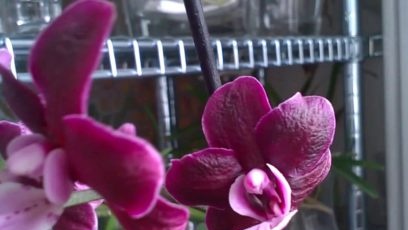
The kaoda twinkle orchid sub-variety, which is popular among gardeners because of its unique color and pleasant smell. Modified apical leaves of the hybrid of dark purple color, the flowers reach a diameter of 4, 5 cm-7, 5 cm.
Black butterfly
Subsort Kaoda with petals resembling the wings of a cherry-colored moth. It is distinguished by a large number of colors, the delicacy of which is afforded by the pale white speck on the lip.
Twinkle
A hybrid created on the basis of Phalaenopsis Kaoda with bright bard fleshy petals. The stem of the plant reaches a length of 19 cm-25 cm, leaf blades - 21 cm-28 cm. An abundantly flowering hybrid that smells only with high humidity.
Black Prince
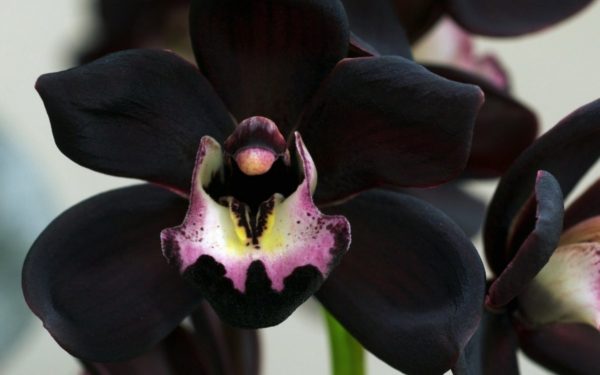
A kind of Phalaenopsis Kaoda with fancy white stripes located in the center of the flowers. The height of the stem reaches 45 cm-55 cm, the diameter of the flower is 7.5 cm. Depending on the conditions of detention, the number of flowers of the hybrid may be different.
Bloom
With its flowering Phal kaoda twinkle will delight the owners constantly, subject to simple rules:
- observing proper watering;
- plant installation on a place where sunshine will not get;
- increase in daylight in the autumn-winter period using fluorescent or phyto lamps;
- moderate top dressing.
After observing the necessary agricultural practices, the orchid will release from one to five peduncles in early spring, on which flowers of a deep dark shade will gradually begin to bloom in two to three weeks. Flowering time can last from 2, 5 to 9 months and will depend on the microclimate surrounding the plant.
Conditions of detention
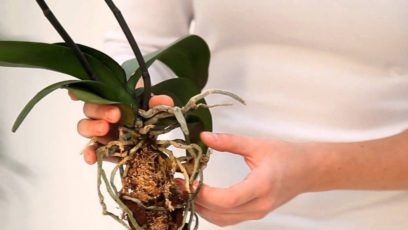
Phalaenopsis Kaoda is a heterotic hybrid that has been bred by breeders to adapt when grown indoors. Therefore, when buying an orchid, you can not worry about the fact that the culture will be infected with viruses or pathogens.
Despite the steady immunity of the plant, it is worth knowing that during the flowering period, kaoda twinkle can not be fed.In the case of fertilizing during the blooming of flowers, the hybrid will bloom very quickly, discard unblown buds.
After flowering, arrange the hybrid for a forced rest period of two to three weeks. At this time, watering is reduced by three times, do not fertilize.
What to do if there are no buds
In some cases, an orchid plant does not bloom. To stimulate flowering, it is worth creating a temperature difference for the flower. To do this, determine the shtamb to a room with an air temperature of + 3- + 5 degrees for two to three weeks. Watering for this period is reduced.
Despite the fact that the hybrid was bred by originators for continuous flowering, for a quality bud formation, arrange culture rest for at least two weeks. During this time, phalaenopsis will gain strength for the formation of ovaries.
Home Care
In order for the orchid indoor plant to develop well and delight the owners with lush flowering, it is necessary to provide him with the conditions under which the “beauty” will feel the best. Since the culture is photophilous, but does not tolerate direct exposure to ultraviolet radiation - provide diffuse lighting.
Best if the pot is located on the west or east side of the room. To prevent burns from ultraviolet light on the foliage, hang the windows with loose curtains or blinds. To make the stem grow symmetrically, without reaching for the sun - occasionally turn the pot.
Soil and pot preparation
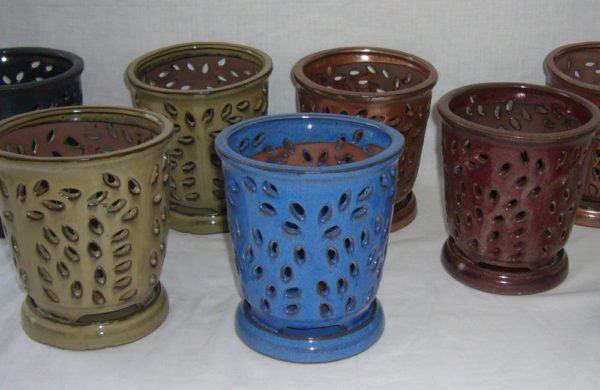
Capacity for the plant should be selected with a small diameter, transparent. The pot should be made of material with the ability to almost completely transmit light rays so that the roots participate well in the process of photosynthesis. Experienced flower growers recommend picking pots with smooth surfaces so that the roots do not grow into rough walls with recesses.
It is advisable to purchase a soil mixture for planting Kaoda at a store. However, if you want to prepare the soil yourself, you will need:
- peat moss Sphágnum;
- finely chopped pine bark;
- calcined sand;
- peat or coconut substrate.
Before planting, combine the ingredients in equal proportions, mix well.
Temperature

To provide good conditions for the growth, development and lush flowering of the "dark beauty", you need to adhere to the temperature regime from +17 to +26 degrees. The plant is able to tolerate heat and cold for several days. However, you should not take risks, since deviations from normal temperature within five to six days will lead to the death of the flower.
Humidity
With respect to air humidity, the Kaoda hybrid is unpretentious and ductile. However, moisture readings below forty percent are undesirable for the plant. In the hot months, it is worthwhile to increase the humidity by regular spraying of the stem. At the same time, avoid droplets falling on the buds and petals. You can increase humidity next to the plant by pouring water into saucers and placing containers near flowerpots.
Lighting
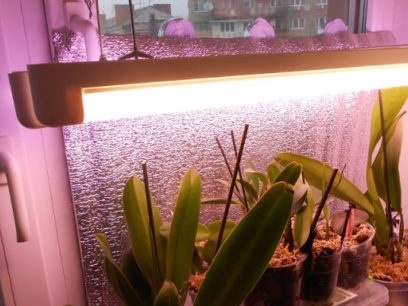
In the summer months, the best source of illumination for Kaoda will not be the hot morning rays, the dim light of the setting sun. Placing phalaenopsis on the southern windows is allowed only with the complete shading of the windows. In winter, plants can be placed on the south side of the room. It should be remembered that in a short day, the culture will need to be illuminated with fluorescent lamps so that the lighting per day is at least 13 hours.
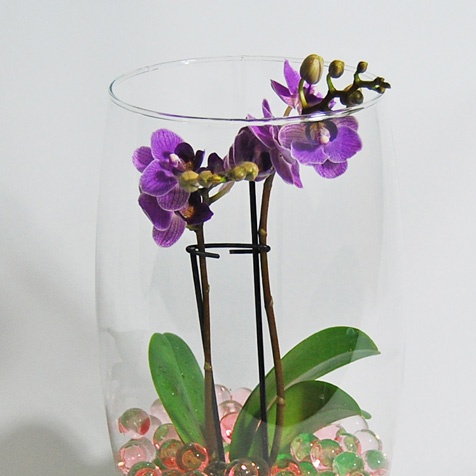 You may be interested in:
You may be interested in:Watering
In summer, the hybrid should be watered twice a week. In winter - reduce the flow of fluid to the root system by half. Focusing on the state of the soil mixture - moisten the substrate only after complete drying. At the same time, remember that the upper layer of soil evaporates the liquid faster than the lower ones.
Observing the plant, it is easy to guess the need for watering according to the state of the air root system. In a culture that has received a sufficient amount of moisture, the root bulbs are directed away from the stem. In plants, the roots of which need watering, the lower part tends down to a moist substrate. A good way of watering for falenopis is to immerse the pot in a container of water for 40-50 minutes. After saturating the roots with moisture, remove the plant, allow the water to drain, determine in place.
Top dressing
For the good development of phalaenopsis, Kaoda twinkle should be fed hybrid two to three times a month with complex fertilizers like Agricola, PET Joy or Rainbow of Flowers by IRIS OHYAMA.
In rooms with high humidity and lighting for at least 20 hours a day, feed the hybrid every week. However, the dosage should be halved. Hybrids with this method of feeding form a large number of flowers, reaching 70 pieces on the stem.
Transfer
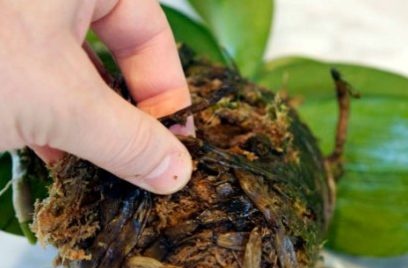
A plant transplant should be done once every three to four years. More often, the procedure is not necessary, since in the process you can harm the root system. When carrying out a transplant:
- gently pull the plant out of the pot;
- in order not to injure the roots, the flowerpot can be cut with a hot knife;
- After extracting the flower, rinse the roots under running water, cut off rotted and dried parts;
- sprinkle places of slices with powdered activated carbon;
- trim yellowed and dried sections of leaf blades;
- after pruning, put the plant on a clean cloth to dry;
- fill the container in which the orchid prepared by the soil mixture will grow, plant a flower;
- after planting, water the plant, determine for better survival for ten days in a dark place.
Breeding
The simplest and most common method of multiplying indoor epiphyte is the separation and transplantation of natural clones of the mother plant. It is carried out 35-45 days after the flowers dry out. During this period, children are formed on the flower arrow or at the bottom of the outlet. After the small clones release milk roots, they can be separated and transplanted into other containers.
Clones can be planted in a substrate or kept in non-chlorinated water for one to two weeks. After determine the soil mixture at a constant place of growth.
Rejuvenation
Over time, the plants acquire a sloppy appearance. In this case, it is worthwhile to rejuvenate the culture, which is a circumcision of bare stems and shriveled leaf plates. So that Kaoda does not suffer from pruning, carry out the procedure according to the rules:
- remove the flower arrow completely only with complete drying out, as new ovaries will form on it;
- in case of partial drying of the peduncle, remove only the wilted area, leaving the one where the buds originate.
Diseases and Pests
With improper care of the hybrid, the plant can become infected with infectious and non-infectious diseases. Most often, the culture is affected by Fusarium wilting, which first appears on the root system, then destroys the flower. Pathology occurs due to waterlogging. If the plant is affected by spores of the genus Fusarium, Caud will have to be thrown away.
Due to the increased moisture, the bulb and young sprouts can be affected by rot. Therefore, the roots between watering plants should dry out. When the orchid is kept in a room with a low air temperature for 10-12 days, the plant may be affected by urticaria, which manifests itself in small oval light brown spots on the leaves. By raising the air temperature in the room, drying the roots a little - you can quickly get rid of trouble.
In addition to pathogens, the plant is threatened by pests such as a false shield and a spider mite. To eliminate sucking parasites that affect the lower part of the leaf plates, you can use the following drugs: Actofit, Actellik.
Growing problems and prevention
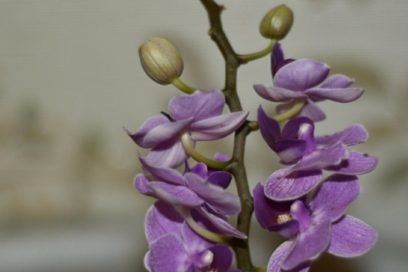
Caring for a hybrid is easy. However, sometimes flower growers encounter the following problems:
- yellowing of leaf plates due to lack of moisture or sucking pests;
- swelling of the leaves due to prolonged contact with water;
- cracking of leaf plates due to an excess of fertilizers;
- falling of the vegetative part due to lack of light or lowering of air temperature;
- frostbite of the plant in winter when ventilating the room.
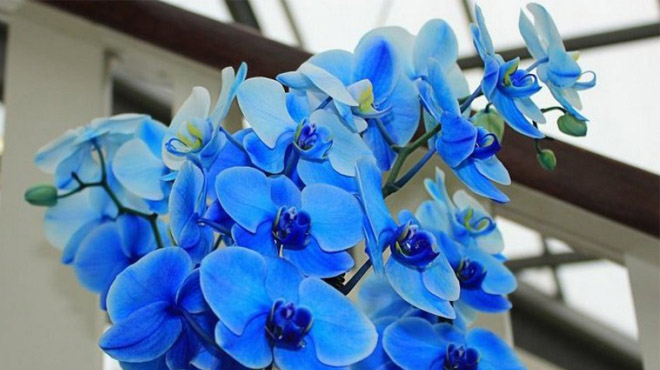 You may be interested in:
You may be interested in:To avoid problems with flowering, to achieve luxurious inflorescences - carry out preventive agricultural practices:
- prevent excess nitrogen in the substrate after top dressing;
- Do not spray Phalaenopsis in autumn and winter, when the room is low, poor air ventilation;
- to carry out preventive measures for the development of fungicide spraying diseases;
- prevent overheating of the root system.
Bright saturated burgundy phalaenopsis kaoda twinkle are the favorites of both the most demanding and inexperienced gardeners. With proper care, “majestic beauties” will add solemnity and chic to any interior.

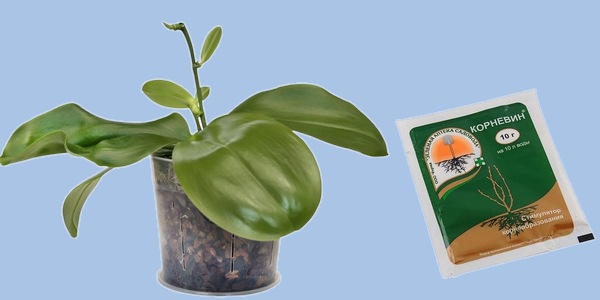
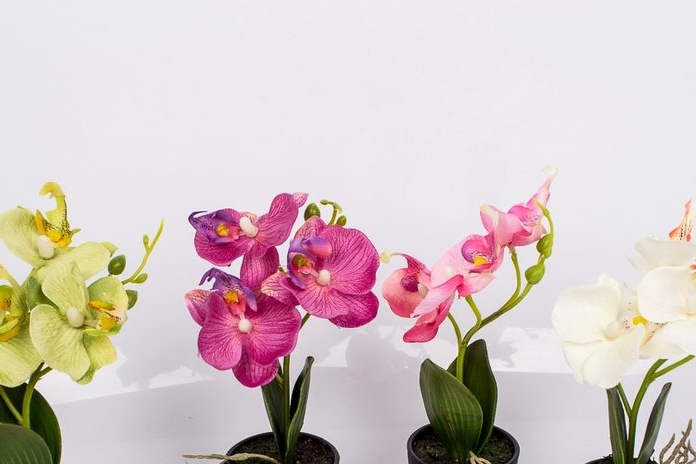
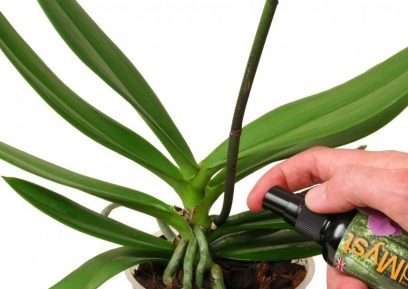
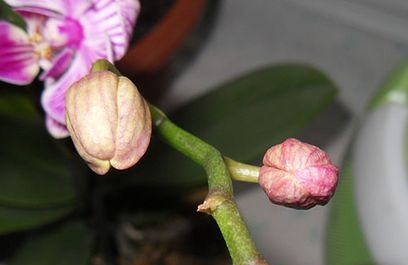 Reasons why orchids fall flowers and what to do
Reasons why orchids fall flowers and what to do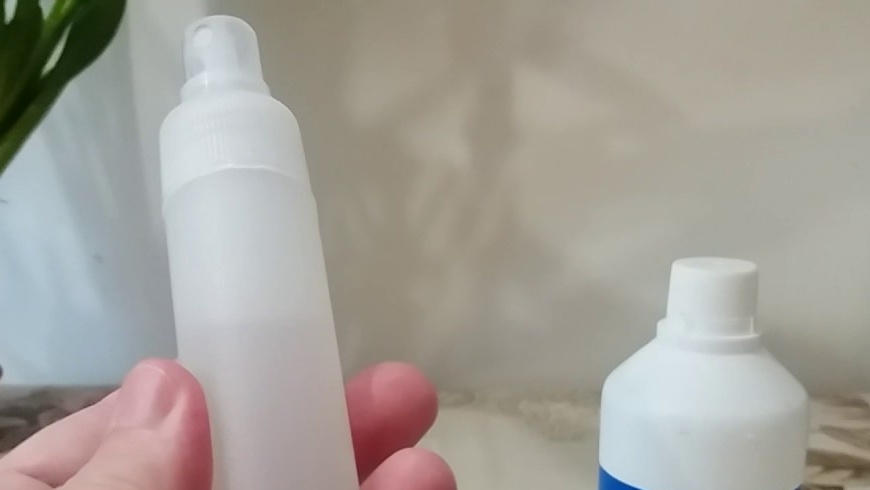 How to use hydrogen peroxide for orchids and why
How to use hydrogen peroxide for orchids and why Midges are wound up in the orchid: effective ways to get rid
Midges are wound up in the orchid: effective ways to get rid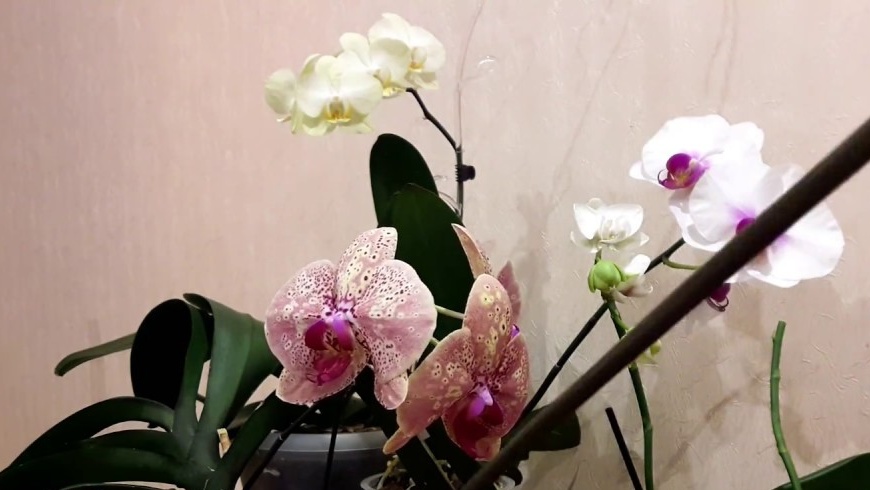 Is it possible to transplant an orchid during flowering
Is it possible to transplant an orchid during flowering